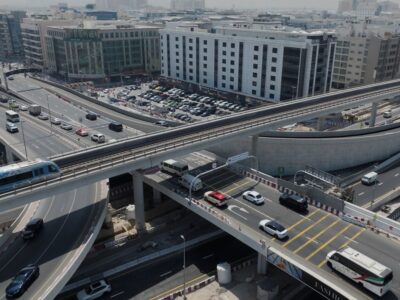Abu Dhabi will add 11,900 new homes to its residential real estate inventory by the end of 2025, but population growth and increased investor interest could mean that demand for housing outpaces supply, according to real estate advisory and property consultant Cavendish Maxwell.
The UAE capital delivered 600 new residential properties in Q1 this year, meaning a total of 12,500 new homes will come to the market by the end of 2025. Another 7,000 are in the pipeline for Abu Dhabi in 2026, Cavendish Maxwell said.
Strong demand boosts Abu Dhabi property prices
Cavendish Maxwell’s report on the Abu Dhabi residential real estate sector shows that in Q1 2025, sales values reached AED 3.7 billion across 1,300 transactions.
Buyers paid an average AED 2.5 million per property – the highest quarterly value since Q1 2022.
Apartment prices were up 12.3 per cent on last year, and 4 per cent quarter-on-quarter, whilst villas were 12.5 per cent and 2.4 per cent respectively.
Ready property transactions increased year-on-year and are most in demand, accounting for 900 transactions worth a total AED 2.3 billion.
Mortgage values hit AED 1.7 billion across 800 loans. Whilst ready property volumes and values were up compared to the same period last year, they were down quarter-on-quarter, potentially reflecting reduced activity post-festive season and less trading during Ramadan and Eid.
Andrew Laver, Cavendish Maxwell Associate Director – Abu Dhabi, said: “The UAE capital is seeing a notable shift towards the secondary residential market, with sustained demand for ready homes and fewer off-plan project launches compared to previous quarters. The average sales transaction reached a record AED 2.5 million in Q1, with encouraging signs of broader price appreciation – a trend we expect to continue in the months ahead. Robust bank activity and strong project delivery during the early part of the year underscore the resilience and dynamism of the Abu Dhabi real estate sector.”
There were 1,300 residential real estate transactions in Q1, with sales values reaching AED 3.7 billion.
The majority – 900 – of these were for ready units, with off-plan properties accounting for 400 deals.
Off-plan activity declined year-on-year and quarter-on-quarter, mainly because of fewer off-plan launches. Sales of ready properties increased year-on-year.
The reduction in transaction volumes was mirrored by a decline in sales values. Despite the slowdown, the average ticket price on ready sales hit AED 2.5 million – the highest recorded value since Q1 2022.
Apartments, villas and townhouses all saw price increases of over 12 per cent year-on-year. Quarter-on-quarter, apartment prices were up 4.1 per cent and villas/townhouses 2.4 per cent.
Buyer activity continues to be driven by growing investor confidence, end-user interest, a macroeconomic environment and rental yields.
In addition, initiatives from the Abu Dhabi government and developers – including payment plans, infrastructure development, long-term residency options and schemes to enhance quality of life in the capital – are stimulating real estate sales and supporting price growth.
The biggest prices rise for villas was in Yas Island (15.5 per cent year-on-year, 3.5 per cent quarter-on-quarter), followed by Saadiyat Island (1.0 per cent and 2.3 per cent). Al Reef prices rose 4.4 per cent and 2.6 per cent respectively.
Whilst apartment sales continue to dominate Abu Dhabi’s residential sector, their market share fell year-on-year, indicating a shift towards villas and townhouses, whose market share showed both an annual and quarterly increase.
Growing demand for villas and townhouses is largely from end-users, and in particular from families potentially seeking more space, a garden and place to live long-term.
AED 1.7 billion worth of mortgages across 800 individual loans were secured in Q1, with transactions on villas and townhouses up almost 60 per cent year-on-year and 3.5 per cent compared to the previous quarter, reinforcing higher demand for these properties and a shift towards end-users.
By contrast, there was a decline in mortgage lending for apartments.





